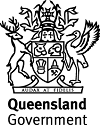Published Tuesday, 22 July, 2008 at 06:42 PM

Minister for Sustainability, Climate Change and Innovation
The Honourable Andrew McNamara
Latest equipment to monitor Gladstone’s air
Friday, July 18, 2008
Lead is one of more than 100 substances that will be monitored as part of the Clean and Healthy Air for Gladstone project, the most comprehensive study of its type ever undertaken in Queensland.
Sustainability, Climate Change and Innovation Minister Andrew McNamara said six of the seven monitoring stations the Government is setting up in Gladstone will test for lead. Residents can view constantly updated data from four fully operational stations at http://www.epa.qld.gov.au/projects/air/ .
The seventh is a state-of-the art optical analyser specifically designed to analyse gases and will be mounted on top of the Entertainment Centre.
Mr McNamara was responding to claims by ANU professor Dr Thomas Faunce, who this week urged Gladstone residents to have their children blood-tested for lead and other chemicals.
“The EPA monitored lead levels in the 1980s but discontinued the tests because only very low levels were being detected, with vehicles being the prime source,” Mr McNamara said.
“Now that the overwhelming majority of vehicles run on unleaded petrol, the levels should be even lower. Industries in the Gladstone area are not a known source of lead as an emission from their production process.”
“However, the tests will be conducted to put the community’s mind at ease.”
The suite of chemicals being monitored as part of the CHAG project has been determined in consultation with its community reference group. The testing regime also was reviewed by one of Australia’s leading air quality scientists, Dr Neville Bofinger from QUT.
Mr McNamara said Dr Faunce did not appear to have all of the facts and offered a briefing by EPA scientists.
“For example, the suggestion that companies could manipulate the tests in the way he suggested just doesn’t stack up,” Mr McNamara said
“Any attempt by industry to frustrate the sampling process will be detectable through changes in the presence of chemicals that will be continuously monitored.”
Four air monitoring stations are on-line, the expanded network will become fully operational within three months when equipment arrives from overseas.
“Some of the equipment has come on to the market only in recent months – it is the best and the latest,” Mr McNamara said.
Pollutants have been selected based on their likely presence in ambient air in Gladstone, their likely health effects, and also in response to community concerns.
The pollutants to be monitored include
• nitrogen dioxide, sulphur dioxide, carbon monoxide, ozone; and particles, including ultra-fines;
• 19 metals including lead, zinc, arsenic and mercury;
• 53 volatile organic compounds including benzene which will be monitored at all seven stations;
• carbonyl compounds including formaldehyde; polycyclic aromatic hydrocarbons; and acidic and caustic aerosols;
• polychlorinated biphenals, dioxins, furans, fluorides, cyanides.
For further information about the Clean and Healthy Air for Gladstone project, write to the Project team at cleanair.gladstone@epa.qld.gov.au or P.O; Box 5065, Gladstone, Qld 4680.
Media contact: Scott Dixon (Minister’s office) 0439 761416

